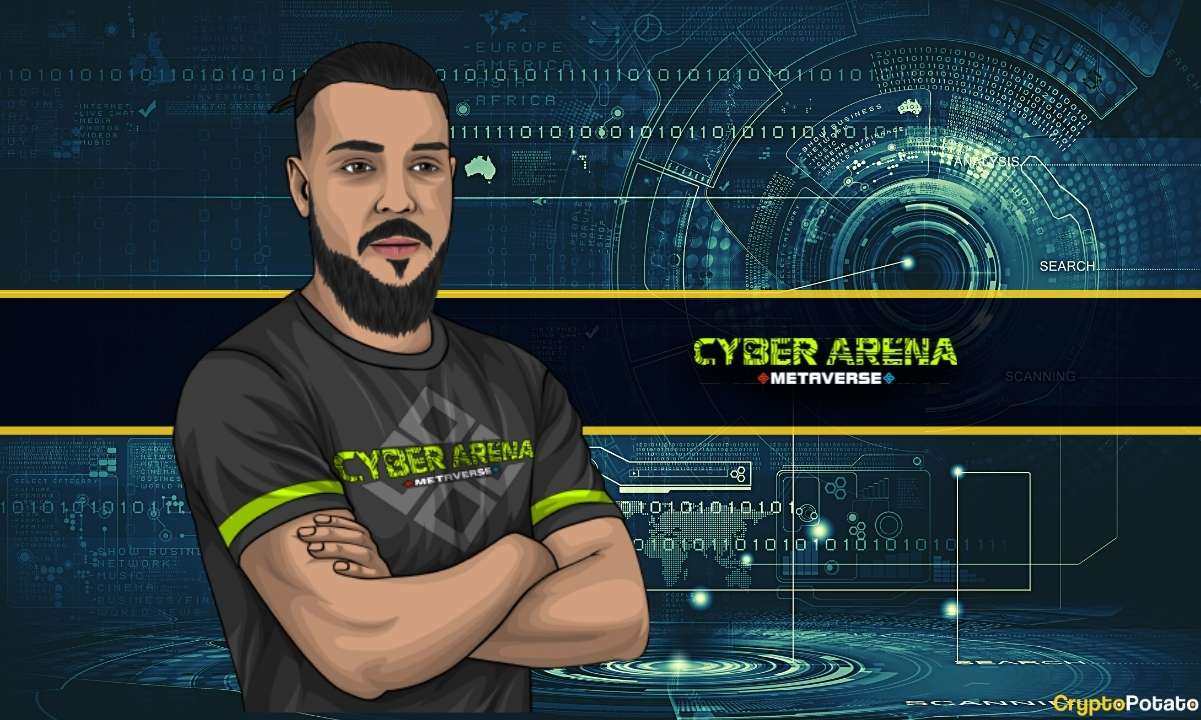Web3 gaming has undoubtedly been one of the hottest stories over the past couple of years. The advent of non-fungible tokens spurred massive growth in the industry and prompted many people toward what many seem to believe is the gamer’s ultimate dream – to earn money while playing their favorite game.
This has given rise to the play-to-earn concept, and it’s been one of the most powerful narratives over the last crypto cycle.
In this interview, we talk to Cyber Arena‘s co-founder and CEO – Nikola Paunović – to find out what the biggest challenges in the industry are, as well as how they’re attempting to overcome them and become the Blizzard of Web3 gaming.
Starting off, could you perhaps tell us a little bit more about yourself and your background? How did you end up in crypto, and what were you doing before it?
I have over 10 years of experience in the web and IT spaces, where I also learned how to grow companies and scale through leadership efforts. My main focus was on a few key areas, including AI, VR, 3D modeling, mobile applications development, web development & marketing, graphic design, and online sales.
I started working in the technology sector in 2016 and eventually joined IMPERIUM Games as their Chief Business Development Offer in 2018. Later in 2019, I become CEO of Veles Technologies, a European manufacturer of VR headsets for homes and everyday use.
Shortly afterward, in the summer of 2021, I began working on Cyber Arena as the Co-Founder and CEO, kickstarting our fighting metaverse to bring it to the masses.
Diving right into it, Cyber Arena brings a very familiar and beloved concept by gamers – that of fighter games – into Web3. There’s quite a bit to unpack here, so:
- Why did you decide to build in the Web3 space?
Mainly two things:
– One, we see that Web3 has the potential to fulfill all gamers’ dreams “to play and earn”
– Two, we see we have great potential because there is a lack of proactive teams with a quality game that has addictive and smooth gameplay
- What do you think the advantages of Web3 gaming are compared to conventional gaming?
Just the top 2% of gamers are earning from traditional gaming, which are mostly the pro players. In Web3, we see an equal chance for everybody to earn while playing the game, and of course, everything the user purchases in Web3, they own those assets, traditional gaming has no such benefits.
Our motto is: “In traditional gaming, people are investing money in order to have quality time… With Cyber Arena, people will be able to invest their quality time in order to earn money.”
Do you think the current market environment will impact Web3 in the long term?
I think crypto is going through a cleansing period, which is very good. I also feel that we are close to the bottom, but we predict definitely bright future from 2024.
What is the biggest challenge that you guys at Cyber Arena have had to face on your journey?
From the development part: multi-player, making zero latency fighting game is not easy at all, and optimizing the game so it can work with high-quality graphics on almost all devices.
What is it that you are most looking forward to, and what do you hope to achieve within the Web3 gaming space?
In phase two of Cyber Arena Metaverse, we are going to introduce some Holywood celebrities who recently jumped into the crypto space, so we will integrate other projects’ communities and non-fungible tokens and give them an opportunity to have a clash between themselves.
We hope to develop and integrate more of our games into Web3 protocols, expand the game categories, and become the Web3 Blizzard.
We want to set up new standards for Web3 gaming and rise the GameFi to a new level.
Can you give us a few details in terms of the gameplay of Cyber Arena? Are there different modes, character backstories, and so forth?
Cyber Arena is fast pasted 2.5D fighting game, Tekken alike. Each character has different fighting styles, animations, and deep lore. There are 4 main game modes:
There’s a Story Mode. It is the single-player mode where people will first learn the fighter’s basics. Each character has a unique story, play-through experience, and gaming life path. Users are able to upgrade characters and assist them to achieve their personal vendettas or liberation goals.
There’s also a League Mode – this is the mode where users can progress through the league divisions, climb up the ranking system, claim exclusive NFTs and tokens, and receive trail rewards at the end of each season.
The Tournament Mode is designed to allow players to participate in tournaments. To do so, they have to own tournament tickets, then they can use a tournament ticket and pick various tournament difficulties and sizes with up to 128 players. The reward system is like a college reward system, so people will need to win just 1 match in order to refund their ticket, each win after that will be pure profit regardless of the tournament size.
Versus Mode – this is the staked play, where users can create their own fight proposal where they set the rules or accept another fighter’s proposal and start duking it out for CAT tokens… The winner takes it all!
Your native token – CAT – what function does it have?
The utility of CAT tokens is driven by gameplay perks and value from the Web2 and Web3 metaverse economy. We are the first Web3 Gaming project that has two games, Web2 and Web3, with 50% of revenue earnings from both games being redistributed in buybacks. Bought Back tokens will be redirected to burns, liquidity, staking rewards, and Airdrops.
Token Value from Game Economy
- Buy-backs: 50% of play and protocol income is used to buy tokens on the market.
- Burns: governance can vote to burn up to 25% of bought-back tokens.
- Staking Rewards: up to 75% of market-bought tokens are distributed to stakers.
- Locks: Staked tokens require a 10-day cooldown for exiting, and bypassing this cooldown carries a 12% fee on the principal stake. Half of the cooldown fees are placed into a lottery pool, divided among 2 stakers every week.
- Liquidity Incentives: LP tokens get a 50% higher weight in staking rewards.
Token Value in Gameplay
- Staking: staking tokens and LP tokens unlocks certain skins.
- Discounts: 5% royalty fee is charged on the trades of game NFTs, i.e., skins. This fee is discounted to 3.5% if the player is staking a minimum amount of game tokens.
- Buy-backs: 35% of NFT trading fees are bought back on the market, which the DAO may vote to burn.
- Staking Yield: Up to 35% of NFT trading fees are available as staking rewards.
- NFT Minting: Web2 skins in the game can be upgraded to NFTs by burning a number of game tokens.
Binance Free $100 (Exclusive): Use this link to register and receive $100 free and 10% off fees on Binance Futures first month (terms).
PrimeXBT Special Offer: Use this link to register & enter POTATO50 code to receive up to $7,000 on your deposits.














